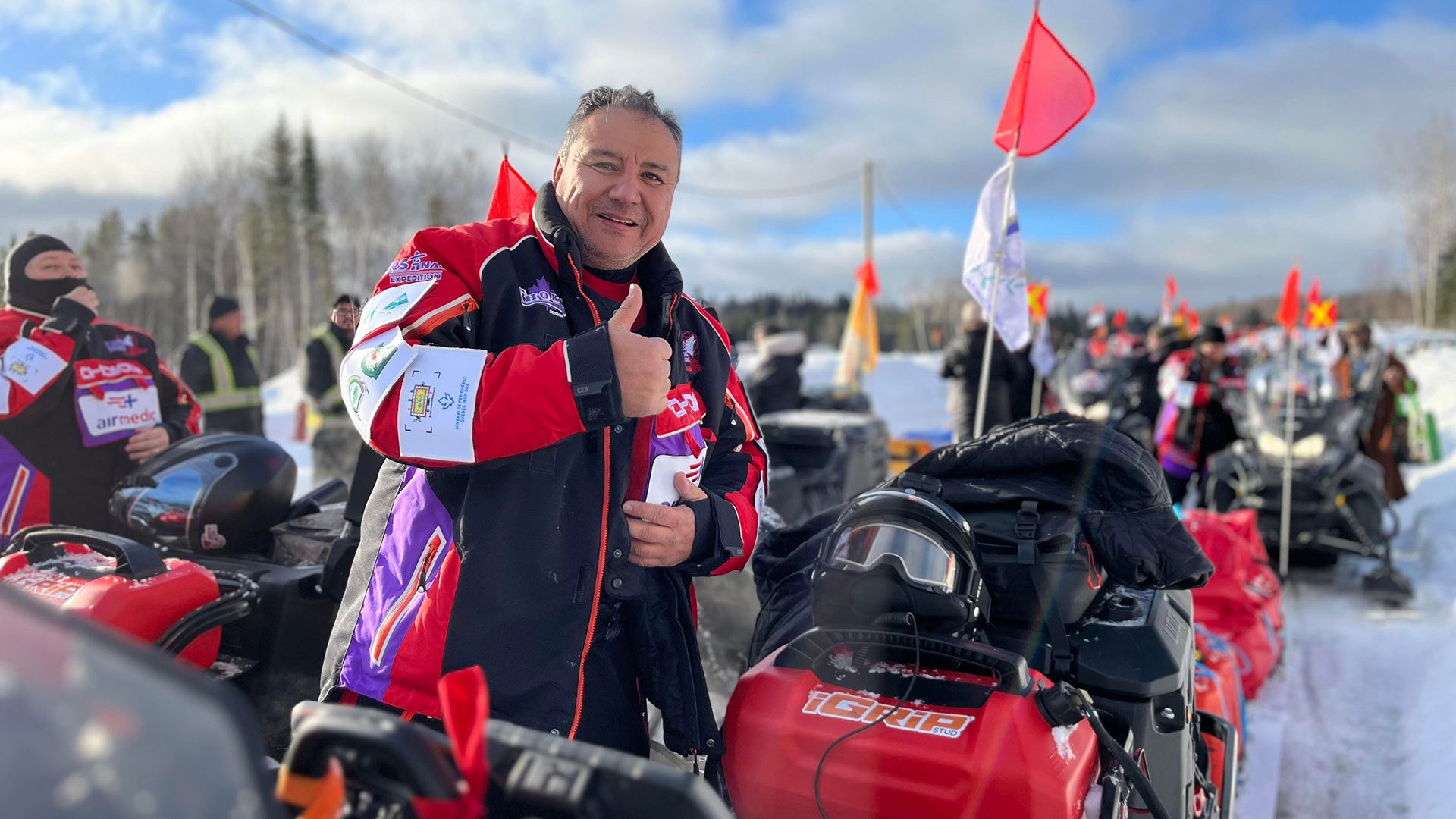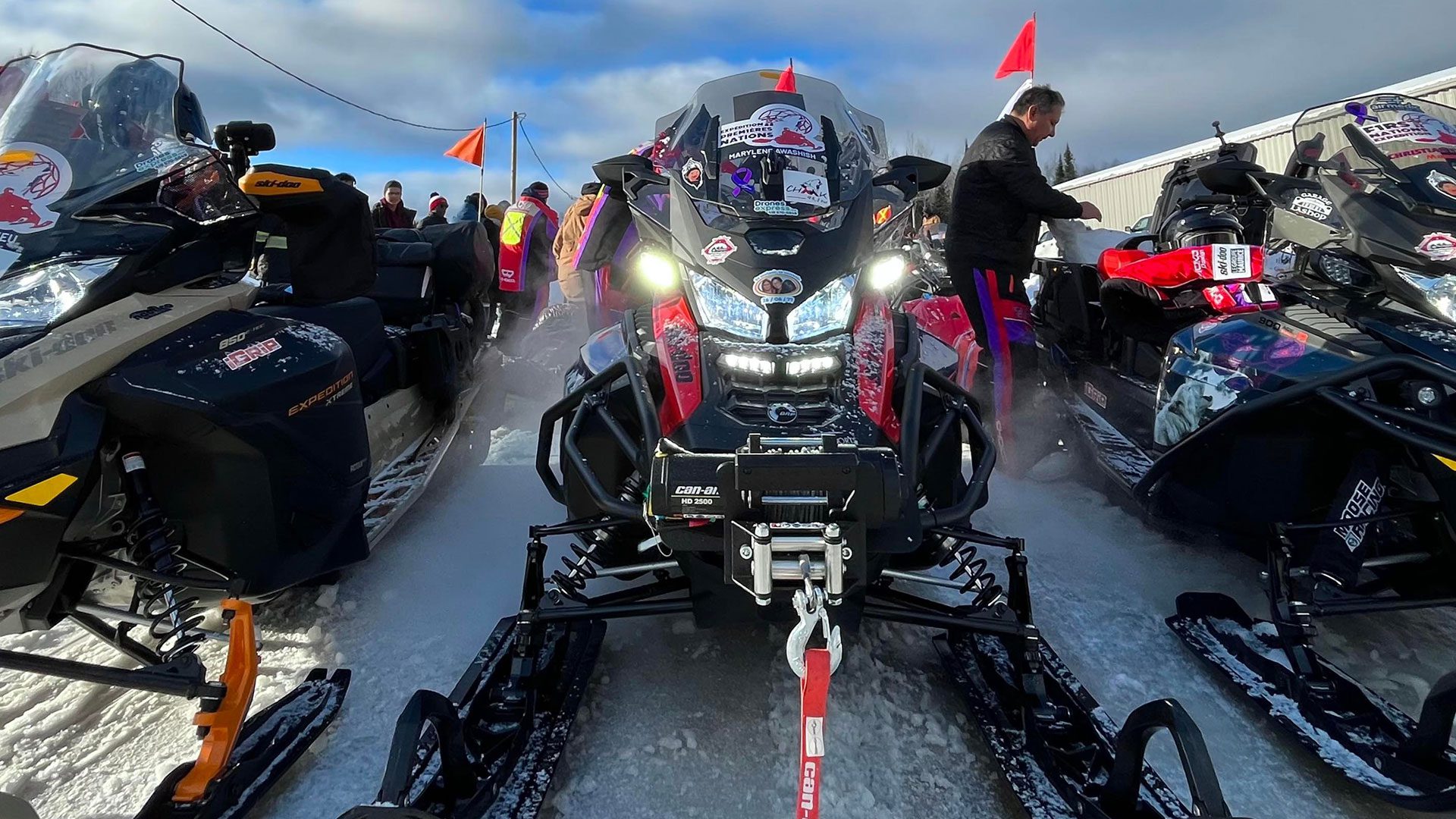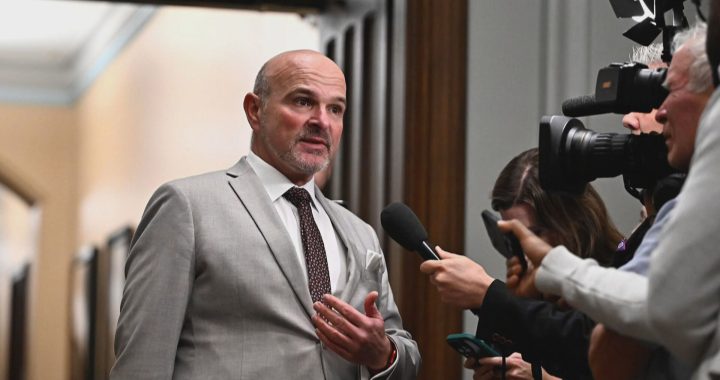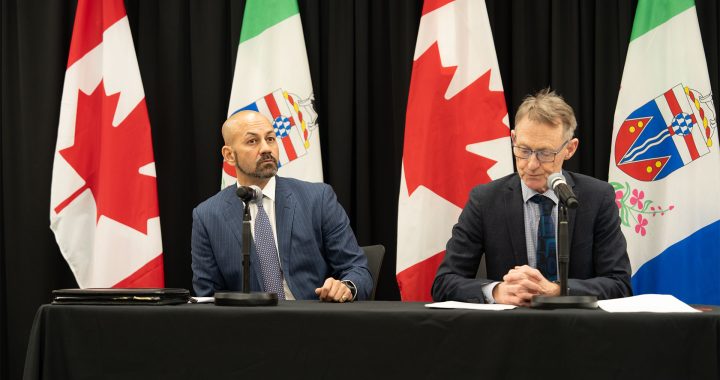The first-ever First Nations Expedition is much more than your typical boys’ trip.
Over a three-week period, 56 participants from First Nations across Quebec will travel in what’s believed to be the longest snowmobile trail in the world – a 4,500-km romp through the ancestral Indigenous territory of at least three nations.
According to participants, it’s a long-distance endurance test in sub-zero temperatures, a navigational challenge, and an informal opportunity to build nation-to-nation partnerships.
“I’m excited to venture into the communities, to share the love, the warmth we have here – that’s human nature. That’s reconciliation,” explained expedition organizer Christian Flamand.
“There are strong messages behind all of this,” Assembly of First Nations Regional Chief Ghislain Picard told APTN News before takeoff.
“It needs courage, and I think that’s what our people need to see.”

The idea for the expedition took root in Manawan – an Atikamekw community 250 km northeast of Montreal – following the death of Joyce Echaquan at Joliette Hospital in September 2020.
By visiting at least 16 communities and municipalities along the route, organizers hope to sensitize others to issues affecting Manawan and other Indigenous communities – such as missing and murdered Indigenous women and girls, the health reform plan Joyce’s Principle, or the Every Child Matters movement.
“Riding across the Indigenous lands – we’re reconnecting with the land, and reconnecting with the people. Other Indigenous groups,” explained Cree Nation Deputy Chief Norman Wapachee, who was on-hand in Manawan for the expedition takeoff.
“We all have common issues, common interests, and we all hope for a better – a brighter – future for ourselves [and] for our children. Our future generations.”

But with anywhere from 250-300 km of ground to cover each day, some participants see the solo riding time as an opportunity for reflection or healing.
“It’s to help me reconcile with myself,” explained Debby Flamand, a carrier of the expedition’s sacred fire, and a child of residential school survivors.
“You know, sometimes in life we take different paths – and I want to find inner peace. But also meet people and reconcile nation to nation.”
For some, the expedition is an excuse to temporarily leave behind their day job.
“I’m a lawyer – so normally it’s a 16-hour day at my desk. So yeah, this is pretty different,” Paul John Murdoch, Cree from Wemindji, told APTN. “I think it’s one of the reasons people go out on the land. It’s just to empty your head, and be one with the moment, and be as present as you can possibly be.”

But takeoff was not an overnight endeavor.
Participants have been in preparation mode for over two years – checking off items from a long, long list provided by expedition organizers.
“We have to have lots of survival stuff for the whole expedition,” explained David Kistabish, Anishinaabe from Pikogan, while pointing to coolers filled with dry provisions, cooking tools, as well as empty gas canisters, rollaway tents, and spare mechanical parts.
“So sometimes we’ll be stopping in remote communities. And sometimes we’ll have to stop and be making our own tents and our own camping sets to spend the whole night.”
And while the 56-odd snowmobiles are customized to suit individual taste – decked out with decals and stickers from sponsors, photos of loved ones, and in one case, three glassy-eyed stuffed animals – organizers insisted on participants all using the same GPS-equipped model of snowmobile in case of breakdown.
And in case of injury or natural disaster – the team is being followed by a ground support team from Air Medic and Rangers with the Canadian Armed Forces.
“We’re not sure of nothing. Anything can happen with those kinds of things. We might break down, we might wound ourselves, we don’t know,” Kistabish added.
“But I’m seeing myself at the end of the line and we’re saying ‘we made it.’ This is what we’re aiming at.”









